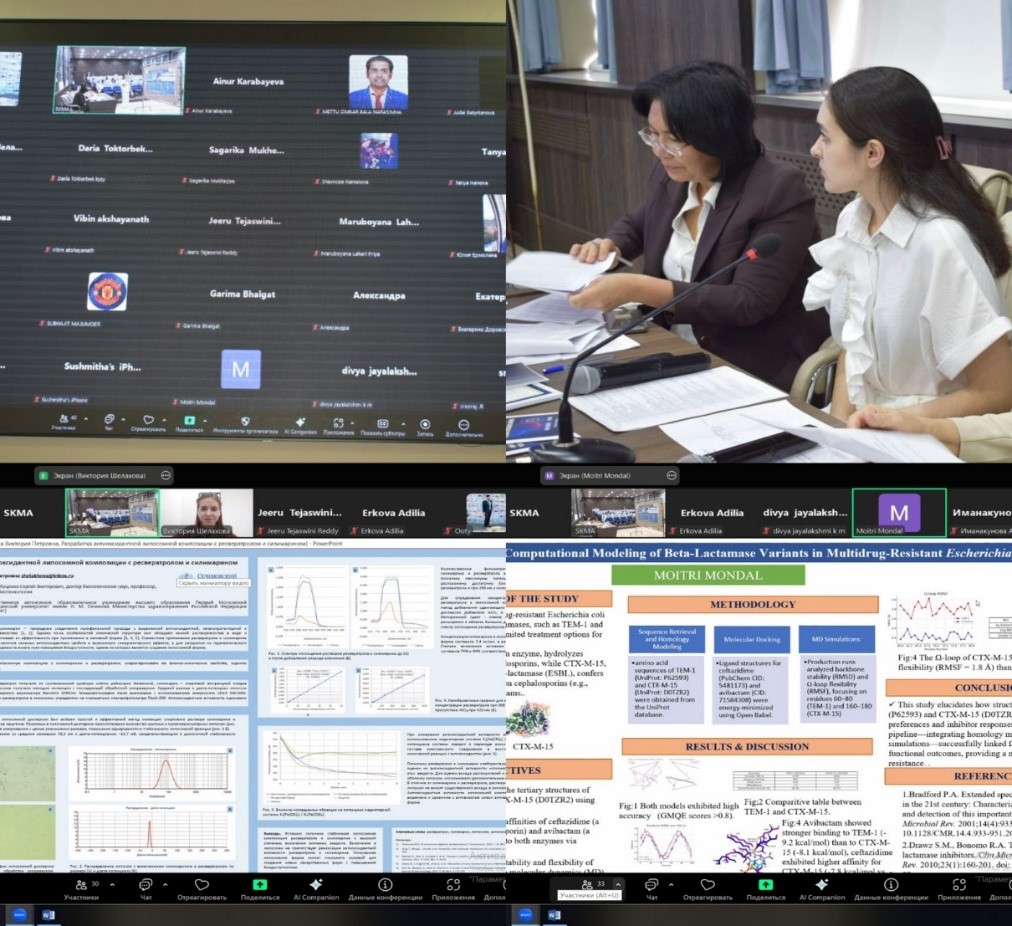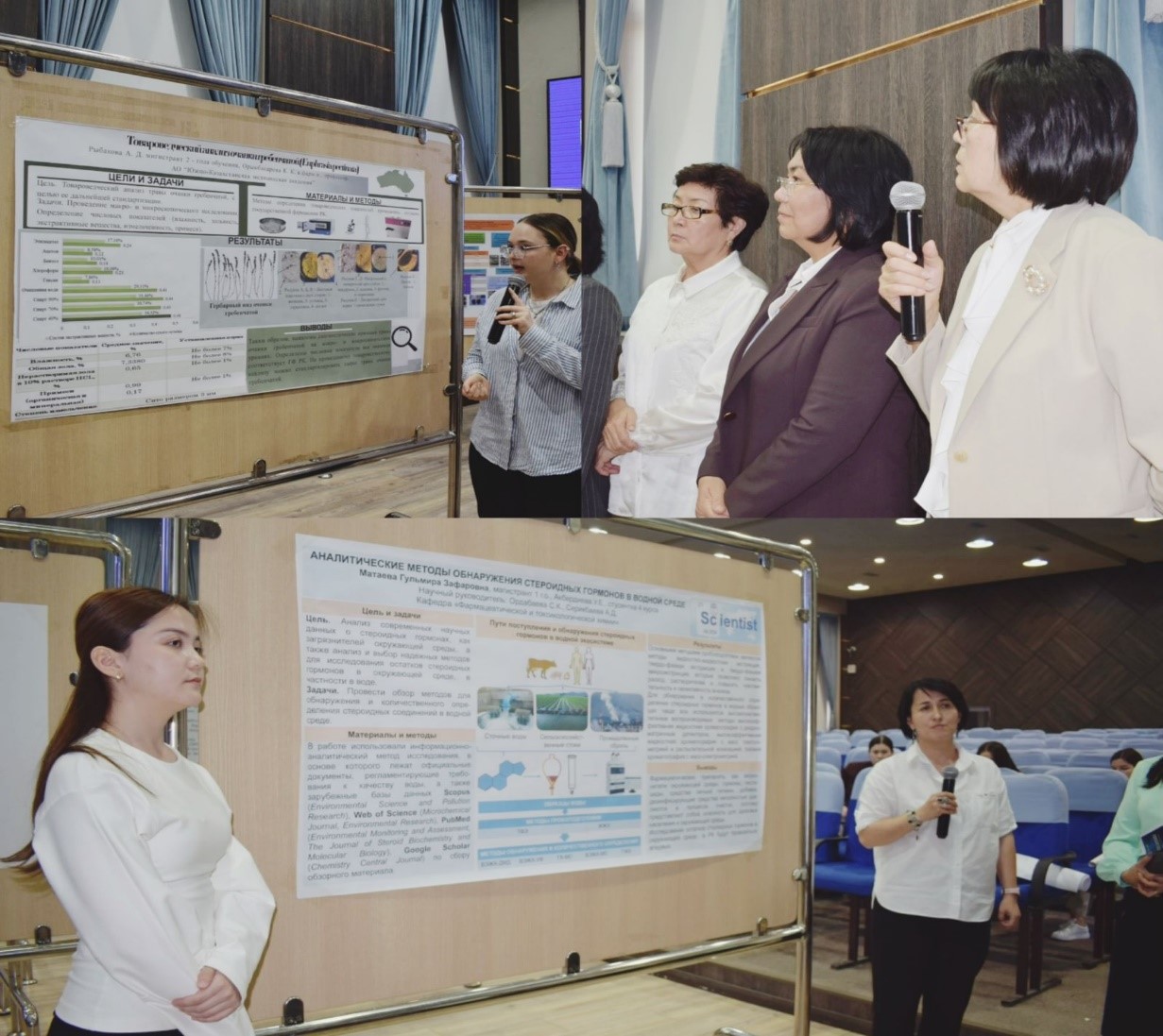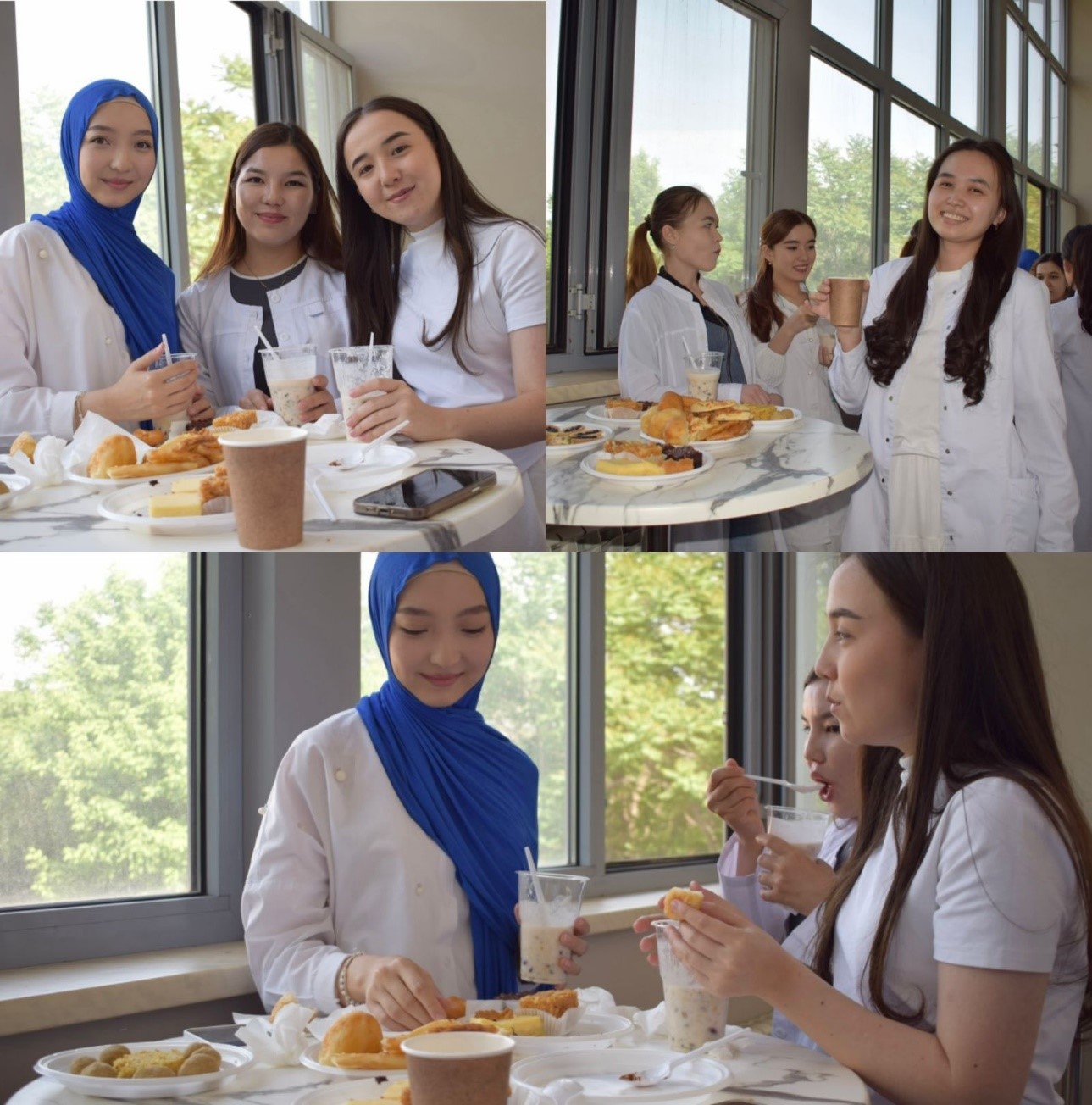III International Poster Presentation Competition “Innovative Ideas of Young Researchers” with the Participation of Partner Universities
The Department of Pharmaceutical and Toxicological Chemistry and the Scientific Research Center of Pharmacy organized the III International Poster Presentation Competition “Innovative Ideas of Young Researchers” with the participation of partner universities.
Students, master's students, and doctoral candidates from pharmaceutical universities in India — College of Pharmacy (Ooty), Academy of Higher Education & Research (Ooty), the First Sechenov Moscow State Medical University (Moscow, Russia), I.K. Akhunbaev Kyrgyz State Medical Academy (Bishkek, Kyrgyzstan), Tashkent Pharmaceutical Institute (Tashkent, Uzbekistan), Tashkent Institute of Education and Research (Tashkent, Uzbekistan), and the South Kazakhstan Medical Academy — took part in the competition.

The purpose of the competition was to showcase the achievements of young scientists in the field of pharmaceutical research. The topics of the scientific works presented by the participants covered a wide range of directions: innovative technologies in pharmacy, the development of new medicinal products, the study of the molecular actions of drugs, in silico design of new derivatives of pharmaceutically active substances for the treatment of breast and cervical cancer, standardization of drugs and plant raw materials, docking analysis of the pharmacological activity of medicines, current issues in pharmaceutical ecology, the results of the cascade implementation of project-oriented work by specialized departments of the Faculty of Pharmacy of SKMA, as well as chemical-toxicological analysis of toxicologically significant compounds.

The event was held in a hybrid format — in person and using the Zoom platform for international participants. A total of about 50 poster presentations were submitted. All materials were sent in advance to the jury members, who included recognized experts in the fields of medicine and pharmacy.

The evaluation of the works was carried out based on several criteria: the relevance and objective of the research, scientific novelty and practical significance, the visual and content design of the poster, as well as the author’s level of preparation — the ability to answer questions, provide arguments, and engage in scientific discussion.
During the conference, participants actively interacted with the jury and audience, answered questions, and discussed their results. After all the presentations, the jury summarized the results and submitted their recommendations to the organizing committee. The moderators announced the results of the competition and the names of the winners.
Each participant received a certificate indicating their scientific supervisor, while the winners were awarded diplomas of I, II, and III degrees. A special prize was also awarded in the “Best Overall” nomination.
During the break, a buffet table featuring Nauryz kozhe, prepared by the department staff, was organized. This part of the program helped to create an even more festive atmosphere and strengthened the connection between students and teachers, as well as contributed to enhancing team spirit.

At the conclusion of the event, the participants and their scientific supervisors expressed positive feedback, noting the high level of organization and execution of the forum. The competition differed from regular conference presentations in that the contestant “defended” their work directly at the venue, answering numerous questions from the audience and jury members. The posters remained on display throughout the competition, allowing participants and jury members to examine the content in detail. As a result, there were more questions and just as many impressions and emotions from the speakers.
The competition became an excellent platform for presenting scientific ideas and projects, as well as contributed to the development of public speaking skills and the effective use of digital technologies.
